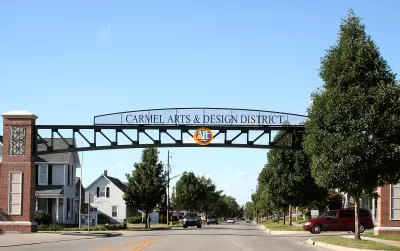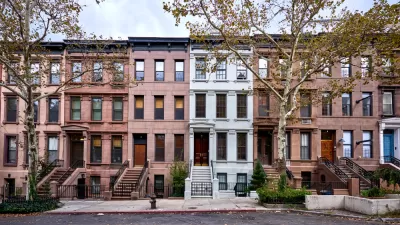Cities with populations between 25,000 and 100,000 continue to see an influx of migrants lured by lower costs of living and high quality-of-life metrics.

According to an article by Zoe Manzanetti, a new report quantifies the factors behind the urban exodus that began before 2020 and was accelerated by the pandemic. The report compared key social and economic factors in small cities—those with populations between 25,000 and 100,000—around the country and measured how they score on a variety of metrics that include cost of living, commute time, crime rates, and urban amenities.
Manzanetti quotes Jerry Anthony, an associate professor at the University of Iowa, on the benefits of small cities:
"Usually lower-cost housing, a better sense of community and connectedness to events and activities in the community, more opportunities to make a tangible difference through civic engagement, a greater sense of fulfillment and life satisfaction [and…] much less time spent commuting or traveling within the city."
The article details the scores of the cities in the top and bottom percentiles of the study on measures such as affordability, economic health, and safety.
Small cities have experienced steady growth as new flexibility offered by remote work, coupled with a desire to escape the confines of crowded urban areas during the pandemic and the spike in housing costs in major cities, have pushed many Americans to move out of metropolitan areas altogether and embrace the opportunities presented by smaller towns. This, in turn, has led to a rise in home prices and a phenomenon known as rural gentrification that, like its urban counterpart, threatens to displace long-term residents by pricing them out of the local housing market.
FULL STORY: The Migration to Smaller Cities Will Continue Post-Pandemic

Alabama: Trump Terminates Settlements for Black Communities Harmed By Raw Sewage
Trump deemed the landmark civil rights agreement “illegal DEI and environmental justice policy.”

Planetizen Federal Action Tracker
A weekly monitor of how Trump’s orders and actions are impacting planners and planning in America.

The 120 Year Old Tiny Home Villages That Sheltered San Francisco’s Earthquake Refugees
More than a century ago, San Francisco mobilized to house thousands of residents displaced by the 1906 earthquake. Could their strategy offer a model for the present?

In Both Crashes and Crime, Public Transportation is Far Safer than Driving
Contrary to popular assumptions, public transportation has far lower crash and crime rates than automobile travel. For safer communities, improve and encourage transit travel.

Report: Zoning Reforms Should Complement Nashville’s Ambitious Transit Plan
Without reform, restrictive zoning codes will limit the impact of the city’s planned transit expansion and could exclude some of the residents who depend on transit the most.

Judge Orders Release of Frozen IRA, IIJA Funding
The decision is a victory for environmental groups who charged that freezing funds for critical infrastructure and disaster response programs caused “real and irreparable harm” to communities.
Urban Design for Planners 1: Software Tools
This six-course series explores essential urban design concepts using open source software and equips planners with the tools they need to participate fully in the urban design process.
Planning for Universal Design
Learn the tools for implementing Universal Design in planning regulations.
Clanton & Associates, Inc.
Jessamine County Fiscal Court
Institute for Housing and Urban Development Studies (IHS)
City of Grandview
Harvard GSD Executive Education
Toledo-Lucas County Plan Commissions
Salt Lake City
NYU Wagner Graduate School of Public Service





























